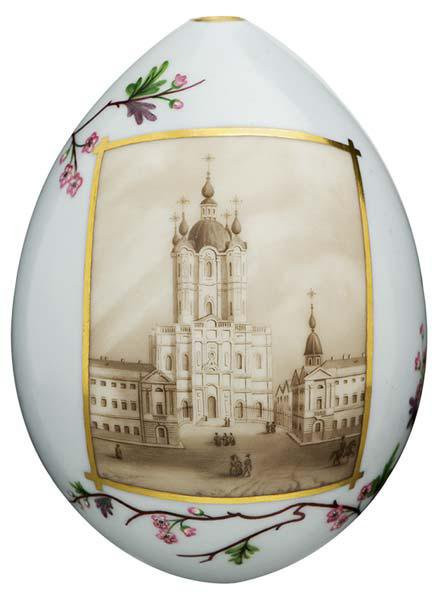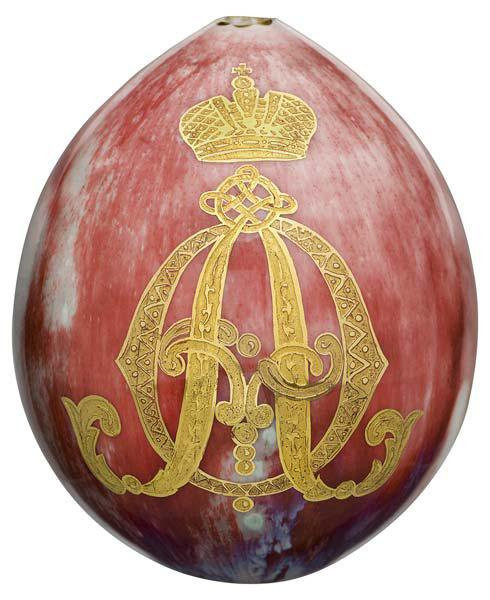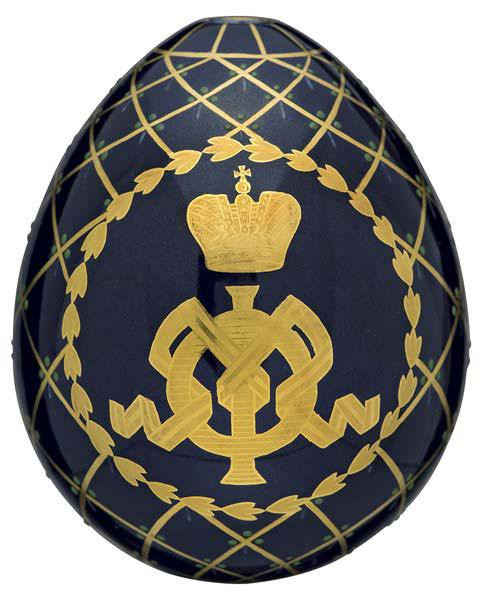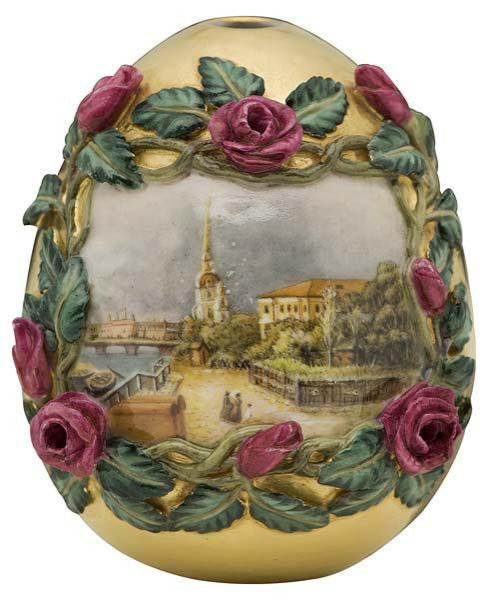Porcelain Easter eggs, many of which are present in the Fabergé Museum collection, are a distinctively Russian phenomenon in decorative art. Such eggs were among the most important items made at the Imperial Porcelain Factory from the moment it was founded in 1744.
The first famous maker of porcelain Easter egg souvenirs was Dmitry Vinogradov, the inventor of Russian porcelain. Initially, the Imperial Porcelain Factory took its cue from the famous Meissen Manufactory, but Easter miniatures were exclusively Russian. The fragile, snow-white porcelain became a symbolic material for the crafting of these Christianity-inspired objects, as they represented hope and rebirth.
The porcelain egg gifts were nearly all meant to be suspended: they had a hole that ran all the way through intended for a ribbon of fine fiber (silk or velvet) of a color that matched the egg itself, with a bow at the bottom and a knot at the top from which it could be hung on an icon case or under an icon.
The Russian tradition of manufacturing porcelain eggs as imperial gifts dates back to the reign of Catherine II. Such gifts at Easter were usually reserved for courtiers and others close to the House of Romanov. But it was not until Nicholas I that the traditional porcelain Easter eggs became works of art: they grew larger and became an excellent canvas for miniature paintings taken from the collection of the Imperial Hermitage. To this end, the artists at the factory were given special access to the Hermitage’s gallery of paintings.
Because the porcelain eggs were not used in religious rituals and were instead mostly secular gifts, they were often decorated with themes unrelated to Easter. Popular subjects included vistas of St. Petersburg and its environs. In addition to paintings, these porcelain eggs were often decorated with precious stones, ivory, gold and silver, as well as stucco and carved ornaments.
Festive presentations of these unique items took place on saint’s days, birthdays, weddings of the imperial family members and other events at court. The faces of saints, copies of paintings, landscapes, floral motifs and ornaments were artfully presented in miniature on the eggs, which were intended as personal gifts. In contrast, eggs with monograms of the imperial family members most often served as imperial gifts given in gratitude for serious acts of service to the tsar’s family or the country.
Porcelain eggs were not only made at the Imperial Porcelain Factory, but also in many private factories capable of copying the Imperial Factory’s products.
Masterpiece 1: Easter egg with a view of Smolny Cathedral in St. Petersburg. St. Petersburg, 1840s. Imperial Porcelain Factory. Porcelain; overglaze painting, gilt, pinstriping.
Masterpiece 2: Porcelain Easter egg with the monogram of Empress Alexandra Feodorovna. St. Petersburg, 1890s–1917. Imperial Porcelain Factory. Porcelain; sang de boeuf glaze, etching, gilt.
Masterpiece 3: Porcelain Easter egg with the monogram of Empress Maria Feodorovna. St. Petersburg, 1890s–1900s. Imperial Porcelain Factory. Porcelain; cobalt underglaze, overglaze painting with enamel paints, gilt, pinstriping.
Masterpiece 4: Easter egg with a depiction of the Peter and Paul Fortress framed by a stucco rose garland. Russia, mid-18th century. Private porcelain factory. Porcelain; overglaze painting, hand sculpting, gilt.



